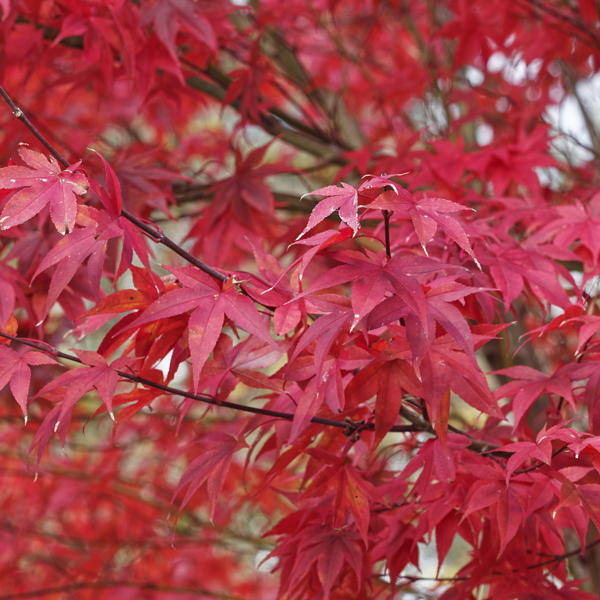Back in the 1960’s, just as I was beginning my career as a nurseryman, I recall the annual visits from Jacques Legendre and Bob Talley, owners of Gulf Stream Nursery. Their tradition was to visit nurseries along the East Coast each year to promote the tree they’d patented in 1947, the Crimson King Maple. Instead of limiting attractive red foliage to a few weeks in autumn, homeowners could now enjoy the benefits of a fast-growing (and affordable) red-leaf tree in their landscape all summer. Despite its disappointingly-bland fall color, few trees then available offered the unique attributes of this tree, and millions were sold over the years.
Crimson King Maple, a cultivar of Norway maple (Acer platanoides), is an impressive shade tree, reaching 50 feet high in some locations, still a distinctive standout in landscapes nationwide. But Norway maples also have an unfortunate propensity to seed-into and dominate natural areas, often displacing native plants. As a consequence of their promiscuous behavior, all Norway maples are now considered invasive in MA and no longer available for sale.
Red summer foliage, contrasting so attractively with the typically-green leaves of other plants, is a very desirable feature in many gardens. So when we want that dark-red-foliage effect in our summer garden, given the unavailability of Crimson King maple, what do we now have for choices? Among the options are red- and purple-leaf forms of beech, crabapple, flowering plum, redbud, smoke tree and other maples.
In my experience, the red-leaf Japanese maple (Acer palmatum ‘Atropurpureum’) is one of the best for most southern New England gardens. Maturing less than half the size of Crimson King maple, it is better suited for smaller landscapes throughout this region, it is not a problem species like the Norway maples, and a wide selection of cultivars are available on the market. The cut-leaf cultivars (named dissectum) are even smaller more delicately branched, reaching only about 10 ft. at maturity. And all Japanese maples offer attractive fall color, another feature that extends the seasonal appeal of your garden.
To assure best results, make sure you choose a named cultivar and plant in a sunny location; unnamed selections grown from seed can show red foliage when they first leaf-out in spring, but often become less red as the season progresses. And even though the red-leaf cultivars grow well in shady areas, high light levels increase the intensity of their foliage color.
Red-leaf Japanese maple named cultivars such as Bloodgood, Emperor 1, Fireglow and Rhode Island Red are some of the most popular at garden centers. Red-foliage cut-leaf types including Crimson Queen, Inaba-shidare and Tamukeyama are commonly available, as are many cultivars with intermediate foliage characteristics and varying growth habits. Talk with the professionals at your local garden center; they are well-equipped to help you choose the cultivars that will perform best in your yard and provide that incomparable red effect all summer.







